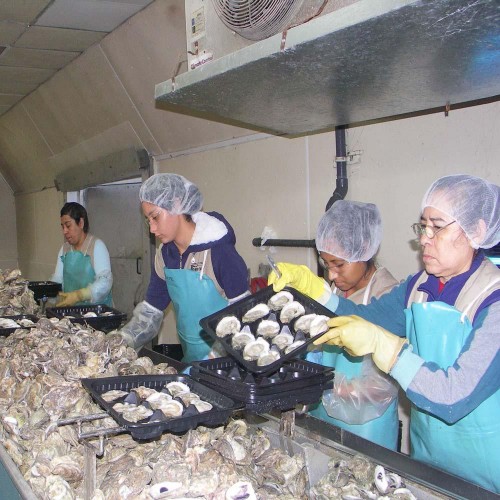Roddy Terrebonne
February 8, 2011Krewe of Christopher Tableau Only, Monday, March 7, 8 p.m. (Thibodaux)
February 10, 2011Recovery will come, but it is going to take time, effort and an undetermined amount of money. This was the bottom line assessment from Saturday’s meeting of Louisiana oyster industry leaders in New Orleans.
The forum of oyster experts focused heavily on the impact left from the Deepwater Horizon oil spill. Water and oyster sampling was also on the agenda as was coastal restoration, insurance costs and efforts to secure compensation from BP through the Gulf Coast Claims Facility.
“I think what is going to happen [in the coming months] is a lot of energy will be put into rehabilitating what was lost,” said Motivatit Seafoods CEO Mike Voisin as he offered his assessment to the day of presentations from industry leaders, scientists, health officials and lawyers.
“The message was basically that we will work our way through this, protect ourselves legally and be cautious about the market,” he said.
Louisiana is the nation’s leader in fresh oyster production, but this year’s harvest is expected to be half of what is normal due to the BP spill. Voisin noted that the oyster industry was harmed mostly by misconception on the part of some media outlets and public understanding following the Deepwater Horizon incident. It was not oil that hurt the oyster industry, he explained, it was the diverted flow of fresh water used to push the threat of oil away from fishing areas, including saltwater oyster beds. While the fresh water helped change currents, it also killed oysters.
Voisin is among those fishing industry professionals that avoid expressing anger and resentment toward the region’s other primary industry – petroleum production.
“Is BP perfect? No. But they are acting responsibly,” he said.
What oyster experts contend is irresponsible, however, is a new federal regulation that requires oysters set to be sold raw, be refrigerated within one hour of harvesting.
Oyster producers said that federal health regulators have over-reacted to oyster related illnesses called Vibrio parahaemolyticus and Vibtio vulnifificus, which are not linked to Louisiana. Industry leaders contend the lack of practicality and expense necessary to comply with such a demand would price oysters out of reach for many consumers.
The oyster business was not the only specialty in the regional seafood industry to face issues this past week. Shrimpers took on the International Trade Commission regarding cheap imports, crab harvesters faced certification and marketing concerns following the BP oil spill, and overnight temperatures that fell into the 30s across coastal Louisiana cause crawfish lovers concern that this year’s harvest might be too small to catch.
Workers at Motivatit Seafoods process between 400 and 800 bags containing 100 pounds of oysters a day. MIKE NIXON







